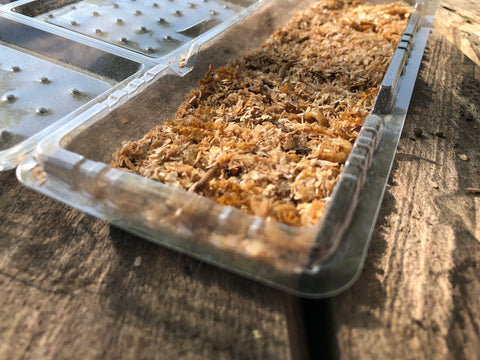Discover the Benefits of Incorporating Livefoods into Your Garden Bird Feeding
Birds rely on high-quality protein sources to stay healthy and active. Live food is an incredibly effective way to meet their nutritional needs.
Live foods such as mealworms, waxworms, and calciworms are packed with protein, essential amino acids, and other nutrients that birds need to thrive. They are also a great source of hydration, which is important for birds in hot weather. In addition to their nutritional benefits, live foods also provide live birds with added enrichment.
If you are looking for a way to improve the health and well-being of the birds in your garden, incorporating livefoods into your feeding routine is a great option. Not to forget watching birds eat live food can be a lot of fun, and it can help to attract a variety of different species to your garden.
Our selection of mealworms and waxworms will captivate the following species:
• Blue Tits
• Great Tits
• Coal Tits
• Marsh Tits
• Willow Tits
• Wrens
• Blackbirds
• Blackcaps
• Song Thrushes
• Pied Wagtails
• Nuthatches
• Tree Creepers
• Warblers
• Robins

Notably, House Sparrows and Tree Sparrows have an increased demand for livefoods during breeding and moulting. You might also tempt Greater or Lesser Spotted Woodpeckers and Green Woodpeckers to visit your garden.
To attract tiny species like Long-tailed Tits, Goldcrests, and small Warblers such as Chiffchaffs, try our Mini Mealworms.

Feeding birds with livefoods is remarkably easy! Our specially designed pre-pack tubs can be placed directly on the bird table or ground, allowing easy access for the birds. Alternatively, you can use a convenient Mealworm Feeder and purchase worms in bulk.
For most species, a smooth-sided bowl serves as an ideal feeding device. Place it on the bird table, on the ground, or under a bush to attract a diverse range of species. To accommodate Wrens, consider placing a brick or log on top of the bowl to restrict access.
To entice Greater or Lesser Spotted Woodpeckers, you can provide Mealworms or Waxworms in holes drilled into a dead tree trunk or branch. Green Woodpeckers can be attracted by creating an artificial ant hill and filling the holes with Mealworms.
Both Mealworms and Waxworms are eagerly consumed by virtually all insect-eating bird species. Scatter a few Mealworms on the ground or on sunflower husks under a feeder to encourage natural foraging behaviour.
Shallow dishes, such as plant pot saucers baited with Mealworms, placed near a garden pool can attract Wagtails.
Feeding livefoods to garden birds plays a crucial role in conserving a growing number of species. You can provide Livefoods throughout the year, with particular importance during the breeding season and in challenging weather conditions.
Remember to monitor the amount of food provided and adjust accordingly based on consumption. Many birds become regular visitors, and some may even become tame enough to feed from your hand.
Livefoods, including Mini Mealworms, Waxworms, and Crickets, offer essential nutrition for native birds during breeding, especially during early spring cold spells when natural food sources are scarce and nestlings are at risk of starvation.
Here are some of the benefits of feeding livefoods to birds:
• Livefoods are a high-quality protein source that is essential for birds' health.
• Livefoods are a great source of hydration, which is especially important for birds in hot weather.
• Livefoods provide birds with enrichment and can help to attract a variety of different species to your garden.
• Livefoods are relatively easy to care for and can be stored for long periods of time.
With a little care and attention, you can provide your garden birds with a healthy and nutritious diet that will help them thrive.
Feed your feathered friends the best live foods for optimal health and well-being. Why not read more about our Handy Guide to feeding Wild Birds Live Food.
